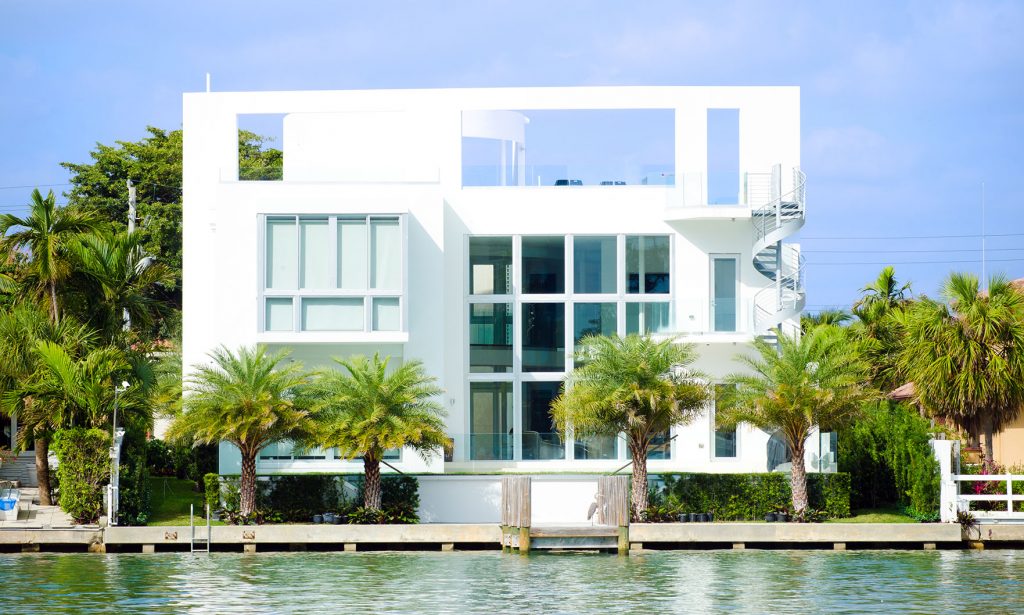Miami’s housing market continues its upward rise, as existing home sales, median prices, dollar volume and luxury sales all showed year-over-year increases in 3Q 2019, according to a report released by The MIAMI Association of Realtors (MIAMI) and the Multiple Listing Service (MLS) system.
Total Miami sales increased 4.6 percent year-over-year, single-family home sales increased 7.5 percent and existing condo sales increased 1.9 percent.
Wealth migration is fueling Miami’s market, say industry experts, as New York City hedge-fund managers and Silicon Valley tech entrepreneurs flee their states due to Trump’s new tax law.”Interest from high earners in tax burdened states and declining mortgage rates continue to drive demand in the South Florida real estate market,” said MIAMI Chairman of the Board José María Serrano.
According to the report, Miami single-family home luxury ($1 million and up) home sales increased 11.8 percent in 3Q 2019, while Miami existing condo luxury transactions increased 2.7 percent.
Not surprisingly, median home prices in Miami were also up, rising 2.8 percent to $370,000, while the median price for existing condominiums increased 4.3 percent year-over-year to $245,000. In a trend that began almost 8 years ago, this was the 31st consecutive quarter that median prices in Miami have increased.
By comparison, the national median existing single-family home price in the third quarter was $280,200, according to the National Association of Realtors.
Miami single-family home sales volume rose 13.4 percent in 3Q and the median percent of original list price received was 95.5 percent. Miami cash sales represented 31.9 percent of closed sales, double the national figure. According to MIAMI Association of Realtors, the high percentage of cash buyers point to Miami’s status as the top U.S. real estate market for foreign buyers, who tend to purchase with all cash.
Cash sales accounted for nearly half – 44.5 percent – of all Miami existing condo sales. Condo sales volume stayed even at $1.3 billion although figures do not include Miami’s multi-billion-dollar new construction condo market.
The report called Miami’s single-family home market “balanced,” as inventory in 3Q decreased 3.1 percent to 4.3 months of inventory.
According to the report, Miami neighborhoods with the lowest months of supply of single-family home inventory in 3Q 2019 included:
- Westwood Lakes, a South Dade community north of Kendall, 1.9 months’ supply
- Richmond Heights, a South Dade community south of Kendall, 2.1 months’ supply
- Brownsville, a North Dade community north of the City of Miami, 2.3 months’ supply
- Cutler Bay, a South Dade city south of Palmetto Bay, 2.9 months’ supply
- Palmetto Estates, a South Dade community west of Palmetto Bay, 2.9 months’ supply
- Kendall West, a South Dade community west of Kendale Lakes, 3.2 months’ supply
Meanwhile, a 13-month supply of condo inventory has created a buyer’s market for Miami condos, with the 3Q numbers showing a small inventory decrease of 1.9 percent. But based on expected population growth, experts predict Miami condos will be absorbed in the next year or so and are planning accordingly. Many, like Miami-based real estate firm and asset management company JQ Group of Companies, are already building in alternate locations.
“We are thrilled to witness the inaugural development of our new QUINT brand come to fruition,” said Jesus Quintero, CEO and founder of JQ Group of Companies, referring to the firm’s waterfront development in Hollywood. ”When completed, we look forward to joining a market of high demand, while delivering not only a product of the highest quality, but also bringing the first of its kind to the Hollywood area.”
Overall, the report pointed to the strength of Miami’s real estate market, which has been steadily gaining speed since the Great Recession. In 2009, for example, distressed sales comprised nearly 70 percent of Miami sales. The latest report showed only 5.7 percent of closed residential sales were distressed, yet another sign that Miami’s market is expected to continue its upward climb.

